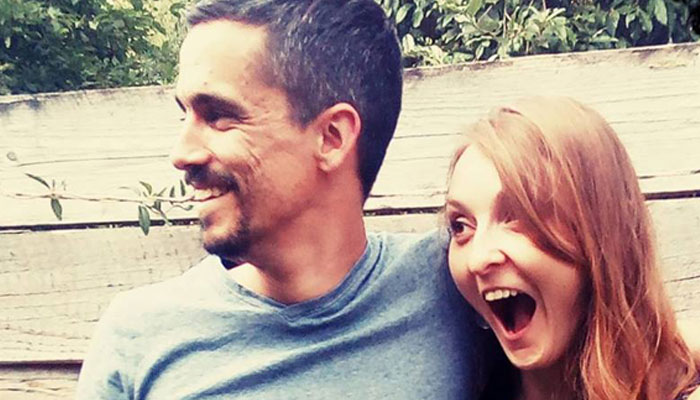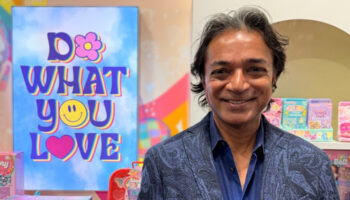Award-winning game designers Wilfried and Marie Fort on playtesting, pitching and why ideas are like soap bubbles

Wilfried and Marie Fort are the game design duo behind popular kids’ games like Mr Wolf, Snail Sprint and the 2019 Kinderspiel des Jahres-winner, Valley of the Vikings.
The two are also in the running to win the prestigious award again this year, with two titles in the running: Storytailors and Dragomino, co-designed with Bruno Cathala.
We caught up with Wilfried and Marie to learn more about how they collaborate, their approach to pitching and what they do to fuel creativity.

Hi guys, great to connect! My first question is how did you first get started in the world of game design?
Hi Billy! We both have creative backgrounds, but our last jobs didn’t really allow us to use this creativity enough. As such, we spent our free time constantly working on many little projects in order to use this creativity. One lucky day we tried to make a game… And we loved it! It was through this that we discovered the magic world of board games.
Many months later we decided to participate in some board game design contests, and we managed to win some of them. We’ve been designing games ever since, for the past five years.
As a pair, how does your creative process work?
The most difficult thing about working as a pair is trying to synchronise the process. Today we have the chance to work on our ideas together on full-time, but in the past, it was more complicated.
This aside, we think working as a pair has some great advantages. We can instantly and honestly discuss how interesting a new idea is, and we can easily playtest a new prototype version, which is more difficult when you work alone.
Even when we work often together on a project, each of us has our own specialities and strengths. For example, when we need special illustrations, Marie draws it, and when we need a special mathematic element sorted, Wilfried sorts it!

You’ve designed lots of brilliant kids’ games, that don’t ‘talk down’ to children; they’re fun, but sophisticated! How do you get that balance right between designing games for kids that are simple enough for the age group, but that still have enough meat on the bones to engage them?
Since our first board game ideas, we designed for children and try to think like children. We always find the game’s true form when playtesting with kids. It’s a process that’s very important for us; we couldn’t assess our game’s legitimacy without that. So, we arrange a lot of board game sessions with schools and that helps us make our games better and improves our knowledge about the children’s world.
We also think that after learning the game with adults, the child should be as autonomous as possible when playing one of our games. That’s why, where possible, we don’t write any number or have any text in our games. We feel autonomy is the key to a great children’s game, and it’s our job to make that possible.
It’s a great point. Now, I wanted to dive into a few of your past titles! I’m a big fan of Snail Sprint – where snails race up the side of the game tin! There’s lots of racing board games out there for kids, but this one has some lovely twists and mechanics in play. How did this idea come about?
Ah! It’s a very good choice! When we explain what we do as board game designers to children, we compare our ideas to soap bubbles. In a few rare cases, you are lucky, and you get a big strong bubble. But often, if you force yourself to make a big bubble, it explodes. So, most of the time, it’s small bubbles that come to you – and sometimes, two or three bubbles meet and make a big one! That’s how Snail Sprint came to us; it was a combination of many ideas.

The first idea was that we know a lot of children love to play with snails – like our younger son. It’s an animal with multiple characteristics that we can use in a game. The second idea was a challenge we set ourselves to make a game in which we could play with the sides of the box. We thought it could make for a wonderful experience. The third idea was that we had wanted to make a magnetic game for a long time.
When we thought to join these three ideas, it all became clear. The only thing left was to imagine a coherent mechanic and story. We then built the twists and mechanics of this game around the snail’s natural characteristics – snails climb on other snails and they can climb vertically!

Amazing! I love the soap bubbles analogy! The other game I wanted to look at was Valley of the Vikings, which saw you win the Kinderspiel des Jahres award in 2019. Again, it looks like a simple dexterity game – rolling a ball to knock over barrels – but there’s lots of tactics at play. Where did the seed of an idea stem from?
Here again, this game came from many soap bubbles! We wanted to tell a pirate story using a ‘hit the can’ mechanic. A few years later, we switched the theme to instead tell a Viking story using a bowling mechanic – it all then made sense!
The Spiel des Jahres are like the Oscars of the board game world. What did it feel like winning the Kinderspiel des Jahres for the game?
It was a wonderful, magical, unforgettable moment for us. The level of importance placed on children’s board games in Germany is really impressive and the Kinderspiel ceremony is a good way to realise it.

Now, for any inventors reading, do you have any pitching advice? What’s key to getting publishers excited about your concepts?
We like to develop our prototypes as much as possible. If we feel our game is not perfect, we prefer to continue to work on it rather than pitching it too early. Then, when the game is ready, we like to meet publishers face-to-face at board game fairs – which has been a little bit more difficult in recent months! We feel we get a better sense of how our game is appreciated in face-to-face chats.
It’s also very important to know how our game fits into the publisher’s ranges because if it doesn’t, everyone has wasted their time!
Last question! How do you guys fuel your creativity?
We find our ideas come to us while walking in the country and observing nature and animals – and watching our children playing. We also love old things, so we spend time walking along brocante fairs. Sometimes we don’t find anything other than inspiration for our next creations!
Thanks guys! Hopefully catch up again soon – and good luck with the awards this year!
—
To stay in the loop with the latest news, interviews and features from the world of toy and game design, sign up to our weekly newsletter here























